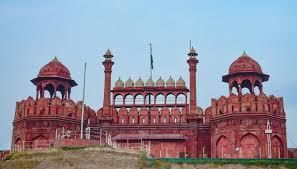Class 7 History Chapter 4 Question Answers - The Mughal Empire
Q1. What was the residence of the Mughal empire?
Ans: Red Fort
 Red Fort
Red Fort
Q2. From their mother’s side, they were descendants of whom?
Ans: Genghis Khan
Q3. From their father’s side, they were successors of whom?
Ans: Timur
Q4. Who was Mughal’s Mongol competitor?
Ans: Uzbeks
Q5. When did Timur capture Delhi?
Ans: 1398
Q6. Who was the first Mughal emperor? Tell his ruling time?
Ans: Babur[1526-1530]
Q7. When was he succeeded to the throne of Ferghana?
Ans: In 1494
Q8. When and where did he defeat Ibrahaminium Lodi?
Ans: 1526 in Panipat
 Panipat in 1526
Panipat in 1526
Q9. From which year to which year did Akbar ruled?
Ans: 1556-1605
Q10. What was the previous name of Jahangir?
Ans: Salim
Q11. Who was Nur Jahan?
Ans: Wife of Jahangir
 Nur Jahan
Nur Jahan
Q12. What was the previous name of Shah Jahan?
Ans: Khurram
Q13. Who rebelled against Shah Jahan?
Ans: Khan Jahan Lodi
Q14. In which year Ahmednagar was finally annexed?
Ans: 1632
Q15. During which Kings period was the size of the empire largest?
Ans: Aurangzeb
Q23. Balkh was a region under control of whom?
Ans: Uzbeks
 Shiva Ji Maharaj
Shiva Ji Maharaj
Q24. When was Golconda annexed?
Ans: 1687
Q25. What was Aurangzeb’s ruling period?
Ans: 1658- 1707
Q26. What was the meaning of manual?
Ans: Rank
Q27. What was the revenue of mansabdars called?
Ans: Jagirs
Q28. Who was Akbar's revenue minister?
Ans: Todar mal
Q29. Who wrote the Akbarnama?
Ans: Abul Fazl
Q30. What was the 3rd volume called?
Ans: Ain-i-Akbari
Q31. Where did Ottawa rule?
Ans: Turkey
Q32. Who married Jahangir in 1611?
Ans. Mehrunnisa
|
63 videos|371 docs|46 tests
|
FAQs on Class 7 History Chapter 4 Question Answers - The Mughal Empire
| 1. Who was the founder of the Mughal Empire? |  |
| 2. What were the main achievements of Akbar the Great? |  |
| 3. What was the significance of the Taj Mahal? |  |
| 4. How did the Mughal Empire influence Indian culture? |  |
| 5. What led to the decline of the Mughal Empire? |  |

















